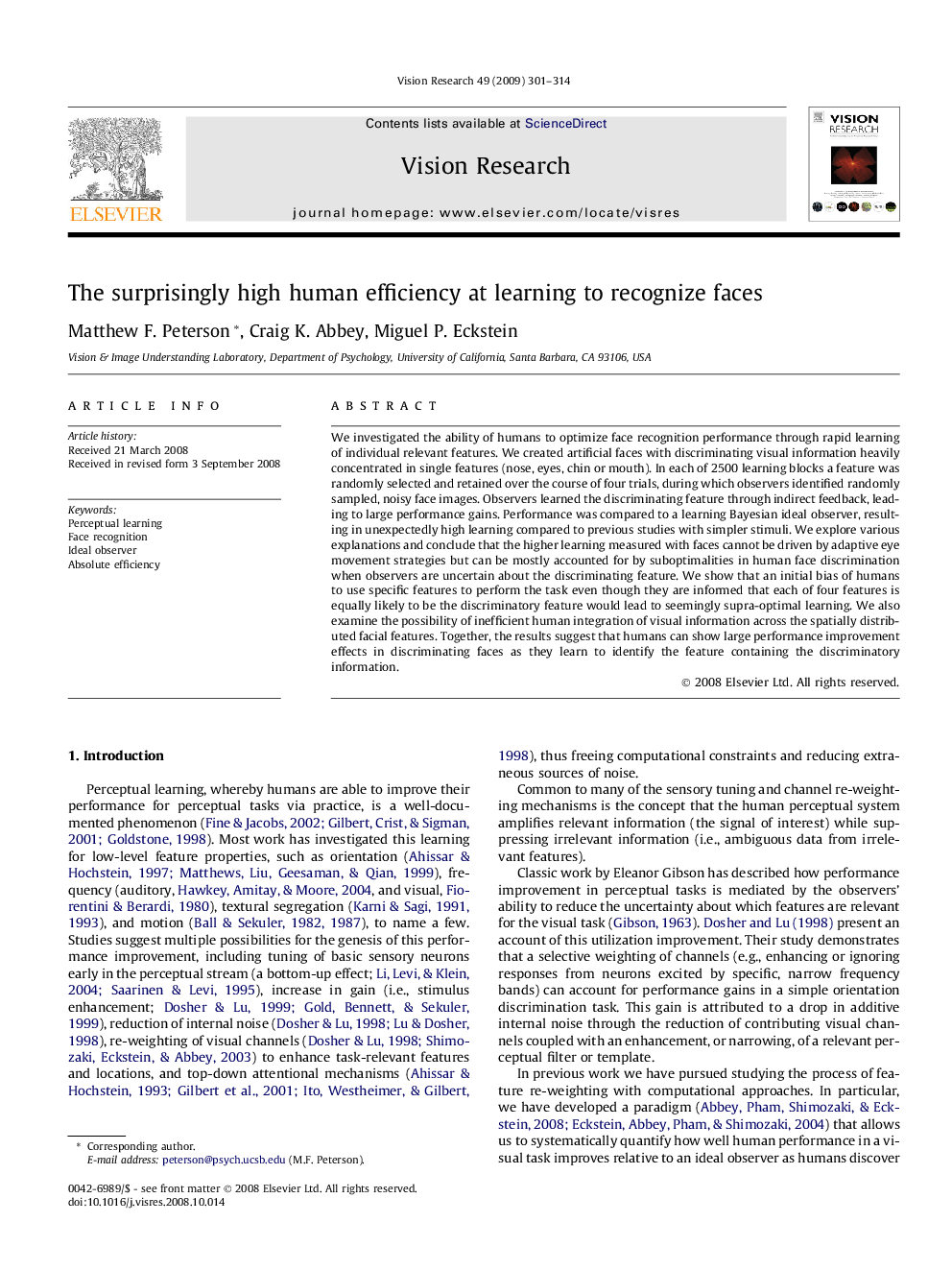| Article ID | Journal | Published Year | Pages | File Type |
|---|---|---|---|---|
| 4034806 | Vision Research | 2009 | 14 Pages |
We investigated the ability of humans to optimize face recognition performance through rapid learning of individual relevant features. We created artificial faces with discriminating visual information heavily concentrated in single features (nose, eyes, chin or mouth). In each of 2500 learning blocks a feature was randomly selected and retained over the course of four trials, during which observers identified randomly sampled, noisy face images. Observers learned the discriminating feature through indirect feedback, leading to large performance gains. Performance was compared to a learning Bayesian ideal observer, resulting in unexpectedly high learning compared to previous studies with simpler stimuli. We explore various explanations and conclude that the higher learning measured with faces cannot be driven by adaptive eye movement strategies but can be mostly accounted for by suboptimalities in human face discrimination when observers are uncertain about the discriminating feature. We show that an initial bias of humans to use specific features to perform the task even though they are informed that each of four features is equally likely to be the discriminatory feature would lead to seemingly supra-optimal learning. We also examine the possibility of inefficient human integration of visual information across the spatially distributed facial features. Together, the results suggest that humans can show large performance improvement effects in discriminating faces as they learn to identify the feature containing the discriminatory information.
